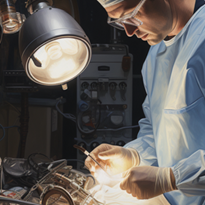Surgical and procedure lights are essential components in healthcare facilities, providing optimal illumination for medical procedures, surgeries, and examinations. Selecting the right surgical and procedure light is crucial to ensure accurate visualization, minimize eye strain, and enhance patient safety. In this comprehensive buying guide, we will discuss key factors to consider when choosing surgical and procedure lights for your healthcare facility.
Types of Surgical & Procedure Lights
Surgical and procedure lights are crucial components in healthcare facilities, providing essential illumination for medical procedures, surgeries, and examinations. Different types of lights are available, each offering unique features and advantages. Understanding the various types of surgical and procedure lights can help you make an informed decision when selecting the most suitable option for your healthcare facility. In this article, we will explore the different types of surgical and procedure lights to assist you in understanding your options.
Ceiling-Mounted Lights
Ceiling-mounted lights are fixed lights installed on the ceiling of the operating room or examination area. They provide overhead illumination with the flexibility to adjust the light's position and focus. Here are some features and benefits of ceiling-mounted lights:
-
Features and Benefits
- Overhead Illumination: Ceiling-mounted lights provide a broad and uniform illumination across the entire surgical field or examination area. This helps reduce shadows and ensures consistent lighting during procedures.
- Adjustability: Ceiling-mounted lights often offer adjustable features such as focus, spot size, and light field size. This allows for customization based on specific procedure requirements, ensuring optimal visualization for surgeons and medical staff.
- Space Efficiency: By being mounted on the ceiling, these lights free up valuable floor and wall space, providing more room for medical equipment and personnel.
-
Suitable Applications
Ceiling-mounted lights are commonly used in surgical suites, operating rooms, and large examination areas where a fixed light source is required. They are ideal for facilities that perform a variety of procedures and require consistent overhead illumination.
Wall-Mounted Lights
Wall-mounted lights are fixed lights attached to the walls of the room, providing localized illumination for specific procedures or examinations. Here are some features and benefits of wall-mounted lights:
-
Features and Benefits
- Localized Illumination: Wall-mounted lights focus the light on a specific area or work zone, providing targeted illumination for procedures that require concentrated light in a particular region.
- Flexibility in Positioning: These lights offer the advantage of being adjustable and movable along the wall, allowing medical staff to position the light precisely where it is needed.
- Compact Design: Wall-mounted lights have a compact design that minimizes obstruction and provides ease of use in smaller treatment areas or specialized procedure rooms.
-
Suitable Applications
Wall-mounted lights are commonly used in smaller treatment rooms, clinics, and specialized procedure areas where localized illumination is required. They are suitable for dermatology, minor surgeries, dental procedures, and other applications where targeted lighting is crucial.
Portable Lights
Portable lights, also known as mobile lights or examination lights, are versatile and movable light units that can be easily transported and positioned as needed. Here are some features and benefits of portable lights:
-
Features and Benefits
- Mobility and Flexibility: Portable lights offer the advantage of mobility, allowing medical staff to move the light source to different locations within the facility or between rooms as required.
- Adjustability: These lights often come with adjustable features such as height, angle, and focus, enabling medical professionals to position the light precisely for various procedures and examinations.
- Ease of Use: Portable lights are designed for ease of use, with user-friendly controls and maneuverability. They are lightweight and easy to handle, facilitating efficient workflow and reducing strain on medical staff.
- Mobility and Flexibility: Portable lights offer the advantage of mobility, allowing medical staff to move the light source to different locations within the facility or between rooms as required.
-
Suitable Applications
Portable lights are widely used in healthcare facilities for a variety of applications, including examinations, minor procedures, diagnostics, and patient bedside lighting. They are particularly beneficial in emergency departments, outpatient clinics, and settings where mobility and flexibility are essential.
Factors to Consider When Purchasing a Surgical and Procedure Light
Selecting the right surgical and procedure light is essential for healthcare facilities to ensure optimal illumination during medical procedures, surgeries, and examinations. Several factors should be considered to make an informed decision when purchasing these lights. This article will highlight key factors, including light intensity, colour temperature, flexibility, energy efficiency, and ease of use.
-
Light Intensity
Light intensity is an essential factor to consider when purchasing surgical and procedure lights. It determines the brightness and level of illumination required for different procedures. The light intensity should be adjustable to meet the specific requirements of each procedure, ensuring optimal visibility without causing discomfort or glare.
-
Colour Temperature
Colour temperature refers to the colour appearance of the light emitted by the surgical and procedure lights. It is measured in Kelvin (K) and determines the warmth or coolness of the light. The colour temperature should be suitable for the specific procedures being performed. For example, a higher colour temperature (cool white light) may be preferred for precise visual differentiation, while a lower colour temperature (warm white light) may be preferred for patient comfort and relaxation.
-
Flexibility and Adjustability
Flexibility and adjustability are crucial factors when choosing surgical and procedure lights. These lights should offer various positioning options, allowing medical staff to adjust the light's angle, height, and orientation to ensure optimal illumination during procedures. The ability to focus the light beam and adjust the light field size and shape are also important features to consider.
-
Energy Efficiency
Energy efficiency is an increasingly important consideration in healthcare facilities. Opt for surgical and procedure lights that utilize energy-efficient technologies, such as LED (Light Emitting Diode) lights. LED lights consume less energy compared to traditional lighting options, resulting in cost savings and reduced environmental impact. Additionally, LED lights have longer lifespans, reducing the frequency of bulb replacements and minimizing maintenance costs
-
Ease of Use and Ergonomics
Surgical and procedure lights should be user-friendly and easy to operate. Consider lights with intuitive controls, allowing medical staff to adjust the light settings effortlessly. Ergonomic features, such as handles or touchless controls, can contribute to ease of use and reduce the risk of contamination during procedures. Lights with smooth surfaces and easily cleanable materials facilitate maintenance and infection control.
-
Durability and Maintenance
Durability is a crucial factor in surgical and procedure lights, as they are subjected to frequent use and may be exposed to fluids, impacts, or vibrations. Choose lights that are built with high-quality materials and have robust construction to ensure longevity. Additionally, lights with easy maintenance features, such as replaceable parts or modular designs, simplify servicing and minimize downtime.
-
Compliance and Safety Standards
Ensure that the surgical and procedure lights comply with applicable electrical safety standards and regulations. They should meet essential safety requirements, including proper grounding,
Choosing the right surgical and procedure light is essential for healthcare facilities to ensure optimal illumination during medical procedures, surgeries, and examinations. Factors such as light intensity, color temperature, adjustability, energy efficiency, ease of use, durability, and compliance with safety standards should be carefully considered. By selecting lights that meet these criteria, healthcare facilities can provide accurate visualization, reduce eye strain, and enhance patient safety. Making an informed purchasing decision when it comes to surgical and procedure lights is crucial for the overall success and efficiency of medical procedures and examinations.










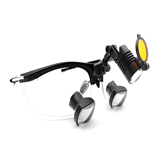

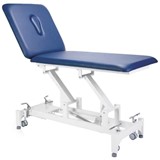

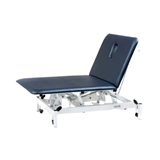
-160x160-state_article-rel-cat.png)

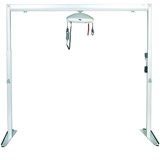
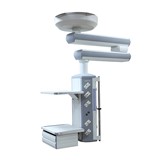


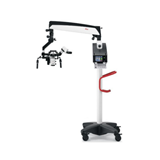
%20(1)-160x160-state_article-rel-cat.png)



